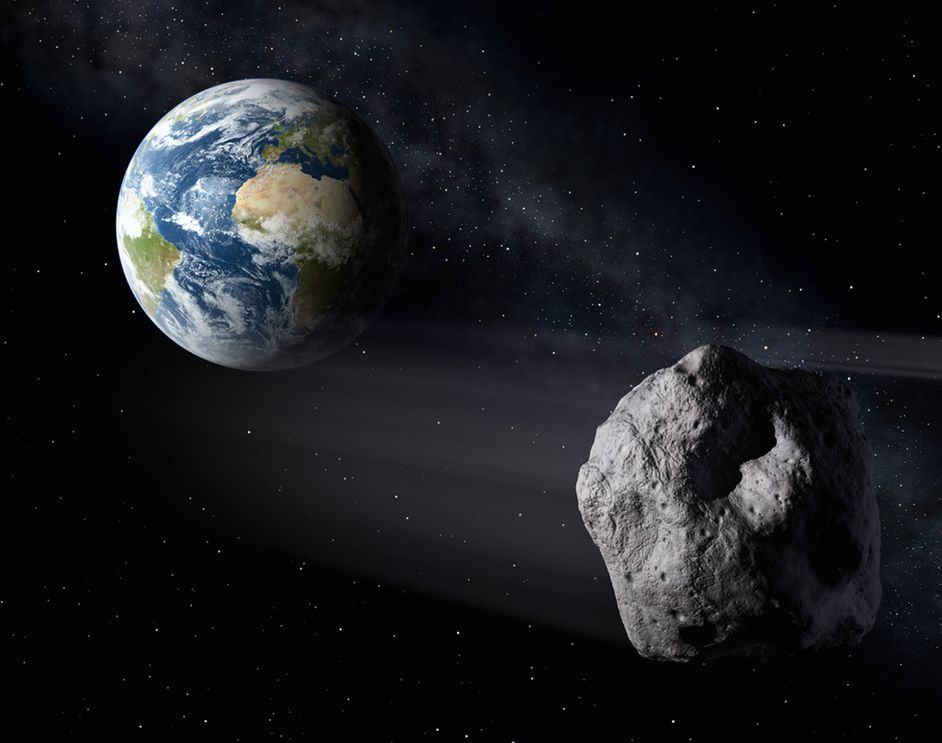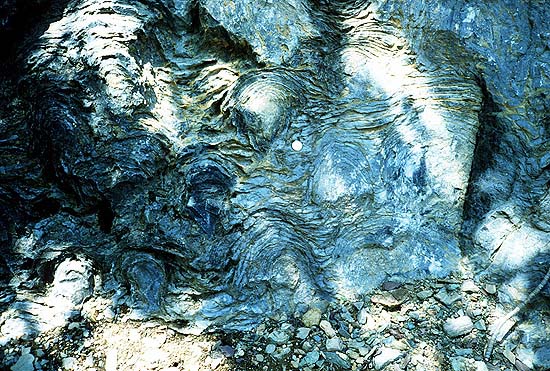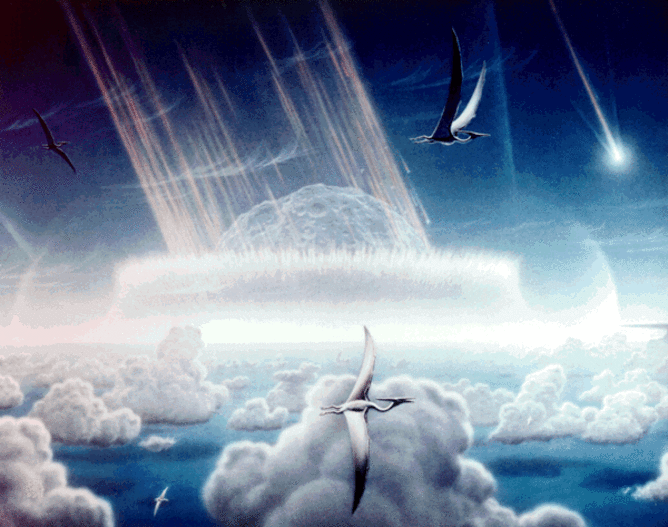For the last few decades, ever since the gradual decline of interest in the American space program, scientists and engineers have sought a way to get to Mars, a rather lofty goal that might be reachable within the next 20 years, but may perhaps be one of the longest planetary flights that astronauts have yet to undergo, with a great deal of equipment to be tested out first for safely landing on Mars’ thin atmosphere alone. While NASA still hopes to reach the red planet by 2035, their spaceflight program has a different short-term goal for next decade, one that might even be attractive to at least some of the types of people who were adamant against trips to the moon – putting an asteroid in lunar orbit.
You read it right. The plan unveiled yesterday by NASA officials has been called by some as the plan to give the moon its own moon – to capture an asteroid and safely place it within the orbit of our moon for closer study, allowing astronauts to land on it and sample it from the safety of a nearby orbit. Its the goal of the agency’s latest effort known as the Asteroid Redirect Mission (ARM), which hopes to bring about new technology that will be crucial in the mission to Mars and other deep space missions in the future.
NASA’s decision to kick off ARM was postponed for several months, while two individual teams investigated how to best pursue the mission objectives. In its original proposal, known as Option A, ARM proposed using a “grab and bag” approach, a robotic space tug is used to trap a small asteroid in its entirety, cover it in a protective sheath and then guide it towards the moon’s orbit. Option B costs about $100 million more, whitch will snatch the boulder directly, but was the winning option, as it provided more more operational flexibility, according to NASA’s associate administrator Robert Lightfoot.
In a recent conference call he took with reporters, Lightfoot noted that their decision was partially based in the fact that our telescopic surveys have not yet sighted any asteroids that are both small enough and slow-moving to fulfill Option A. Any asteroids suitable for harvesting would also be extremely difficult to categorize from Earth with the existing technology. Option A would therefore be “a one-shot deal,” had he chosen to carry it out, with many potential shortcomings should they choose the wrong target, whereas Option B would have a lot more to choose from.
“From what we know of the asteroids we’ve been to, they have boulders on the surface,” said Lightfoot. “I’m going to have multiple targets when I get there, is what it boils down to.” Implementing Option B would mean that ARM would then be allowed to capture and deliver a space boulder as large as 12 feet across and then carry it off to high lunar orbit.
This might sound to you like searching the entire beach for a grain of sand, considering the size of asteroid belts existing in our solar system, but NASA already has three potential candidates lined up for ARM: asteroids Itokawa, Bennu and 2008 EV5. The Japanese space agency’s craft Hayabusa paid a visit to Itokawa in 2005, and NASA’s OSIRIS-REx already plans to visit and extract new samples from asteroid Bennu, which it will reach by the year 2019. No spacecraft has yet orbited the 2008 EV5, and NASA has placed it on the top of their list for ARM targets. They hope to make their official target selection by 2019, according to Lightfoot.
“[2008 EV5] has been extensively observed” using infrared and radio telescopes,” said Lindley Johnson, the program executive at NASA’s Near-Earth Object Program. Scientists have been using the observations of Johnson’s team for determining the asteroid’s orbit, and also the size, shape, rate of spin and composition. 2008 EV5 has been described as ‘a slowly spinning 400-meter-wide walnut, with a prominent ridge wrapped around its middle.’ It is a carbonaceous asteroid, which means that it’s a composite of rock and also molecular organic compounds and water-rich minerals, containing much of the substance found in the primitive nebula, out of which the solar system condensed from. For astronauts who are privileged to walk on its surface, it may be the closest they’ll ever get to walking on an early primordial Earth. Bennu is also a carbonaceous asteroid, and very soon scientists may be able to hold a piece of the solar system from when it first originated once the OSIRIS-REx returns.
Science, however, is only ARM’s ulterior motive. Their goal, as stated, is to both test and create new potential technologies to improve spaceflight, particularly NASA’s Space Launch System heavy-lift rocket, the Orion deep-space crew capsule and also an advanced solar-electric propulsion engine that would be best suited for long-haul cargo trips such as the Mars mission. NASA has also sold the missions as being a potential step forward in showing how a spacecraft is capable of changing the orbits of asteroids that may pose threats to life on Earth, part of its “Redirect” program.
According to Lightfoot, NASA’s current plan hopes to launch the robotic tug into space by 2020, where it will spend two years navigating for its target. The robotic tug might spend up to 400 days near its target as it selects the right boulder. Once the tug makes its selection, it will then use the extra mass from its target to function as a “gravity tractor,” in which it will orbit the asteroid in a way that will slightly alter its trajectory. While this orbital shift may be slight, it will still be in the measurable range of ground-based instruments, and could prepare NASA for making stronger orbital shifts in the future, effectively averting an Armageddon-like scenario. Once the boulder is in its grasp, the robotic tug will then travel to high lunar orbit, where it shall anticipate the arrival of two astronauts via an Orion capsule, an encounter that could happen as soon as the end of 2025. The astronauts will then dock the robotic tug as they conduct spacewalks, investigating the boulder before it returns to Earth, meaning the astronauts will spend approximately an entire month in space preparing the target.
This all might sound exciting, but it’s actually a far cry from what was initially proposed with ARM, and both policy makers and engineers alike are treating it with mild enthusiasm, if not outright disdain. It’s also not without scientists who are critical of the mission. Among them is Mark Sykes, director of the Planetary Science Institute who is unsure of whether, despite the fairly low risks, this mission is of much practical value.
“It is not at all clear how this mission is necessary to advance the stated objective of sending humans to Mars,” Sykes says. “Or even its vicinity.”
There is also concern related to what the mission might mean for NASA’s public relations. The mission may stave off some recent criticism that the agency has not dedicated enough time to space travel. However, some scientists such as NASA’s Advisory Council chair Steve Squyres of Cornell University, feel that the mission may be little more than a tactic – fulfilling political expectations while putting off funding that could be better spent on going to Mars.
“If you’re going to spend $1.25 billion plus launch vehicle costs to do something,” said Squyres, during a council meeting back in January, “and you get the most important things by not going after the rock, don’t go after the rock.”
There are quite a few needs to be met before ARM is fully ready for its mission, such as a solar electric engine that may not be ready by the time of the launch.
The ARM mission was born back in 2010, shortly after President Obama canceled plans for a second manned lunar mission, deciding instead to have astronauts step on an asteroid by the year 2025. At the time, some experts suspected that this was a quicker way to bring humans to Mars, if they would first pick near targets such as the Martian moons Phobos and Deimos which are very reminiscent of asteroids. Unfortunately, NASA’s budget at the time did not have sufficient enough funds for building either the new heavy-lift rockets or deep-space crew capsules fast enough to fulfill that deadline. Sending a manned capsule to an asteroid within its native orbit would simply not be possible by the year 2025. However, there was a slight loophole in the president’s choice of words. Suppose NASA brought the asteroid to the astronauts using that funding? Thus, NASA’s research teams put together ARM.
|
James Sullivan
James Sullivan is the assistant editor of Brain World Magazine and a contributor to Truth Is Cool and OMNI Reboot. He can usually be found on TVTropes or RationalWiki when not exploiting life and science stories for another blog article. |






